LAB REPORT
Science and Technology Making Headlines
Aug. 5, 2022

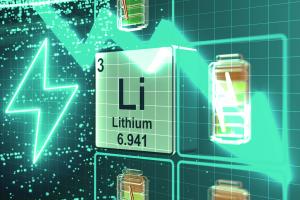
LLNL and UCLA researchers are using 3D printing to create a new design for lithium-ion batteries. Image courtesy of Massachusetts Institute of Technology.
Powering up Li-ion batteries
Materials scientists at UCLA along with colleagues at Lawrence Livermore National Laboratory have been selected to receive another $900,000 grant from the Department of Energy (DOE) — to demonstrate a new design and 3D printing process for manufacturing lithium-ion batteries.
The potential for 3D printed lithium batteries is enormous. At least, this is what the DOE believes – as shown by the department’s $2.4 million investment into researching the necessary technology, in only the past two months. At the end of June, Lawrence Livermore announced a partnership with Ampcera, which would see the development of solvent-free Laser Powder Bed Fusion AM technologies for the fabrication of 3D structured lithium battery cathodes, funded by $1.5 million from the DOE.
Lithium-ion batteries, with their excellent energy-to-weight ratios, are already ubiquitous in phones, laptops, electric vehicles and a range of other consumer products. However, there are limits to the power they can provide and how fast they can be charged, which will hopefully be stretched thanks to the scientists’ work.
The team’s goal is to improve lithium-ion batteries by increasing the available power, speeding up charging, and making them cheaper to manufacture while wasting less material in the process. 3D printing allows for the creation of a more intricate interior battery structure that can store more power – a development critical to the new manufacturing process.

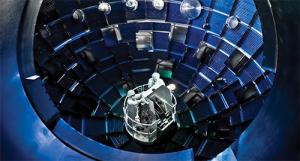
LLNL is working with France on a process that takes place at the National Ignition Facility for testing nuclear material with lasers at low temperatures.
It’s super cool
On January 27, 1996, France conducted Xouthos, its 210th and final live nuclear test, detonating a thermonuclear warhead beneath the Fangataufa lagoon in the southern Pacific Ocean. It marked the end of France’s nuclear tests but not the end of its nuclear stockpile maintenance. To ensure that the country’s warheads are in working order, France is working with Lawrence Livermore National Laboratory to develop a super-cooled laser ignition test facility.
There are eight other nations with nuclear weapons: The United States, Russia, the United Kingdom, France, China, Israel, India and Pakistan. In the 21st century, only North Korea has conducted live nuclear weapons tests. For the other countries, maintaining and sustaining nuclear warheads without real-world tests is an engineering challenge. One way to manage this is through computer modeling, which lets nuclear laboratories refine warhead design and study new types of warhead refurbishment.
But testing a warhead’s actual fissile material, the gas around which a plutonium pit condenses until it sparks a nuclear fission reaction, means looking at the actual material itself, and seeing how it behaves under high density and intense heat. Lawrence Livermore describes a process for testing nuclear material with lasers at low temperatures as a “cryogenic target system,” which it runs in the National Ignition Facility. This system, in theory, would allow them to understand how nuclear fuels behave in conditions of high energy density, by creating real if temporary fusion energy under laboratory conditions.

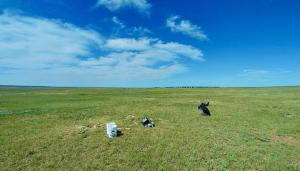
Katerina Georgiou taking a soil core to measure carbon stocks in a temperate grassland.
Can you dig it
Soil is the largest terrestrial reservoir of organic carbon and is central for climate change mitigation and adaptation. Mineral-organic associations play a critical role in soil carbon preservation, but the global capacity for storage in this form has never been quantified.
New research from Lawrence Livermore National Laboratory (LLNL) and an international team of collaborators addresses this gap by producing the first spatially-resolved global estimates of mineral-associated carbon and the carbon-storage capacity of soil minerals.
The research — led by LLNL Lawrence fellow Katerina Georgiou — gathered measurements from 1,144 globally-distributed soil profiles to better understand the role of climate and management on driving current mineral-associated carbon stocks and the departure of soils from their mineralogical capacity.
The study found that regions under agricultural management and deeper soil layers contain the largest undersaturation of mineral-associated carbon; the degree of undersaturation can help inform sequestration efficiency over years to decades.

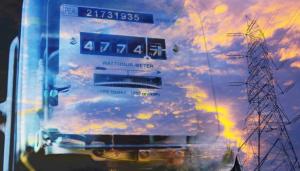
More than 100 million smart meters have been installed in the U.S. These devices record and communicate electric consumption, voltage and current to consumers and grid operators. To help make the most of this data, a Lawrence Livermore team has developed GridDS — an open-source, data-science toolkit for power and data engineers. Credit: Adobe Stock.
Opening up energy GridDS
As of 2020, 102.9 million smart meters — devices that record and communicate electric consumption, voltage and current to consumers and grid operators — have been installed in the United States.
As the number of smart meters and the demand for energy is expected to increase by 50% by 2050, so will the amount of data those smart meters produce. While energy standards have enabled large-scale data collection and storage, maximizing this data to mitigate costs and consumer demand has been an ongoing focus of energy research.
To help make the most of all this data, a Lawrence Livermore team has developed GridDS — an open-source, data-science toolkit for power and data engineer that will provide an integrated energy data storage and augmentation infrastructure, as well as a flexible and comprehensive set of state-of-the-art machine-learning models.

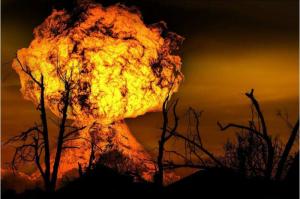
Lawrence Livermore researchers have determined how hotspots in explosions form and grow to better understand what causes them to react. Credit: Pixabay/CC0 Public Domain.
Look out: it’s hot
Scientists at the Lawrence Livermore National Laboratory (LLNL) Energetic Materials Center and Purdue University Materials Engineering Department have used simulations performed on the LLNL supercomputer Quartz to uncover a general mechanism that accelerates chemistry in detonating explosives critical to managing the nation's nuclear stockpile.
Using large-scale atomically resolved reactive molecular dynamics supercomputer simulations, the team aimed to directly compute how hotspots form and grow to better understand what causes them to react.
The team's clustering analysis, which looks at all the atoms in motion, revealed that molecules in a hotspot that are driven from their equilibrium planar shape react more quickly; mechanical deformations of molecules in regions of intense plastic material flow lead to a mechanochemical acceleration of rates.





